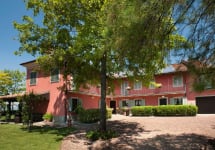Pio Cesare Barbaresco 2019
-
James
Suckling -
Wine
Spectator -
Robert
Parker -
Jeb
Dunnuck



Product Details
Your Rating
Somm Note
Winemaker Notes
A very classical style Barbaresco: elegance and velvety, with ripe and spicy fruit. Strong tannins, but elegant. Good structure and concentration. Very long life.
Professional Ratings
-
James Suckling
This is a very typical Barbaresco, with a solid core of fruit. Lots of strawberries, cedar and chewy tannins. Full and structured. Excellent length, with the tannins kicking in at the end. This needs at least four or five years of bottle age. Try after 2027.
-
Wine Spectator
A graceful, well-toned red, with a solid construction supporting aromas and flavors of cherry, strawberry, rose and graphite. Reveals flashes of tar and white pepper as this winds down on the resonant finish.
-
Robert Parker's Wine Advocate
The words "Barbaresco Pio" appear on the bottom of the label in tribute to the late Pio Boffa. The Pio Cesare 2019 Barbaresco shows a beautiful ruby-tinged appearance that is well suited to the bright aromas of cassis, pomegranate, licorice and grilled herb that lift from the bouquet. This Barbaresco is slender and silky in texture.
-
Jeb Dunnuck
Super-exuberant aromatics jump from the glass of the 2019 Barbaresco, which is flush with rose petal, anise, orange peel, and raspberry. It has good concentration and elegant fruit of cranberry throughout, with fine tannins and sandy earth. This is a refreshing and graceful wine to drink 2024-2035.
Other Vintages
2020-
James
Suckling -
Wine
Enthusiast -
Robert
Parker -
Jeb
Dunnuck -
Wine
Spectator
-
James
Suckling -
Robert
Parker -
Wine
Spectator
-
James
Suckling -
Wine
Enthusiast -
Robert
Parker -
Wine &
Spirits
-
James
Suckling -
Jeb
Dunnuck -
Robert
Parker -
Wine
Enthusiast -
Wilfred
Wong
-
James
Suckling -
Robert
Parker -
Wine
Spectator -
Wine
Enthusiast - Decanter
-
Jeb
Dunnuck
-
Wine
Enthusiast -
James
Suckling -
Wine
Spectator -
Robert
Parker
-
James
Suckling - Decanter
-
Robert
Parker
-
James
Suckling -
Wine
Spectator
-
Wine
Enthusiast -
James
Suckling -
Wine &
Spirits -
Robert
Parker -
Wine
Spectator
-
Wine
Enthusiast -
James
Suckling -
Wine &
Spirits -
Wine
Spectator
-
Wine &
Spirits -
Robert
Parker
-
Robert
Parker -
Wine
Spectator
-
Robert
Parker -
Wine
Spectator
-
Robert
Parker
-
Wine
Enthusiast -
Wine
Spectator -
Robert
Parker
-
Wine
Spectator -
Wine
Enthusiast
-
Wine
Spectator

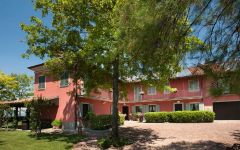
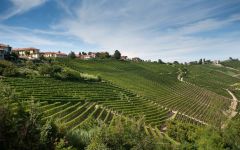
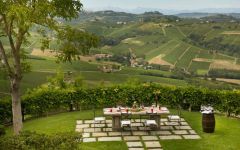
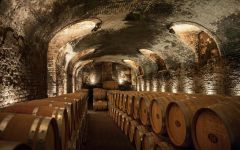


Pio Cesare has been producing wine for more than 100 years and through generations. The tradition began in 1881, when Pio Cesare started gathering grapes in his vineyards and purchasing those of some selected and reliable farmers in the hills of Barolo and Barbaresco districts.
At Pio Cesare, there has always been a conviction that great wine can come only from the finest grapes and the winery's output has always been limited through adherence to the highest standards. Pio Cesare limits its production by using only the most mature and healthy grapes. The ripening of the grapes is carefully monitored and the harvest is rigidly controlled with each grape selected by hand.
Today, the estate is managed by Pio Boffa, great-grandson of Pio Cesare. Under his stewardship, the wines of Pio Cesare have become famous throughout the world. Great strides have been made in quality, and single vineyard offerings have dazzled the wine press.

Responsible for some of the most elegant and age-worthy wines in the world, Nebbiolo, named for the ubiquitous autumnal fog (called nebbia in Italian), is the star variety of northern Italy’s Piedmont region. Grown throughout the area, as well as in the neighboring Valle d’Aosta and Valtellina, it reaches its highest potential in the Piedmontese villages of Barolo, Barbaresco and Roero. Outside of Italy, growers are still very much in the experimentation stage but some success has been achieved in parts of California. Somm Secret—If you’re new to Nebbiolo, start with a charming, wallet-friendly, early-drinking Langhe Nebbiolo or Nebbiolo d'Alba.

A wine that most perfectly conveys the spirit and essence of its place, Barbaresco is true reflection of terroir. Its star grape, like that in the neighboring Barolo region, is Nebbiolo. Four townships within the Barbaresco zone can produce Barbaresco: the actual village of Barbaresco, as well as Neive, Treiso and San Rocco Seno d'Elvio.
Broadly speaking there are more similarities in the soils of Barbaresco and Barolo than there are differences. Barbaresco’s soils are approximately of the same two major soil types as Barolo: blue-grey marl of the Tortonion epoch, producing more fragile and aromatic characteristics, and Helvetian white yellow marl, which produces wines with more structure and tannins.
Nebbiolo ripens earlier in Barbaresco than in Barolo, primarily due to the vineyards’ proximity to the Tanaro River and lower elevations. While the wines here are still powerful, Barbaresco expresses a more feminine side of Nebbiolo, often with softer tannins, delicate fruit and an elegant perfume. Typical in a well-made Barbaresco are expressions of rose petal, cherry, strawberry, violets, smoke and spice. These wines need a few years before they reach their peak, the best of which need over a decade or longer. Bottle aging adds more savory characteristics, such as earth, iron and dried fruit.
